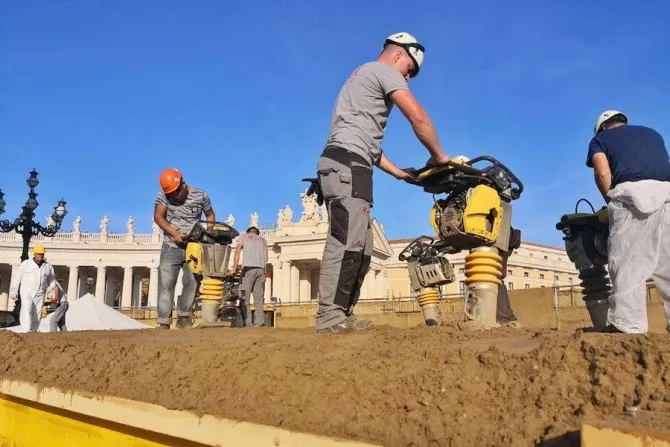Vatican City, Nov 17, 2018 / 16:25 pm
The Vatican's nativity scene will be a little bit different this year. In a departure from the traditional Neapolitan or Maltese figures of recent years, the scene of Christ's birth will be entirely sculpted from sand.
Beginning Nov. 17, four artists are beginning their work in St. Peter's Square, crafting nearly 46,000 cubic feet of sand, equal to around 700 tons, into a grand "Sand Nativity."
The creators, who have been sculpting sand nativities in the Italian town of Jesolo for years, say on their website that the goal is "to build the largest sand nativity in Christendom in the center of Rome in order to provide moments of authentic and joyful contemplation to all those who love Christmas."
Sand Nativity scene in the Italian town of Jesolo. Credit: Town of Jesolo.
A partnership between the mayor of Jesolo and Patriarch Francesco Moraglia of Venice is what brought the famous sand sculptures to the Vatican for Christmas 2018.
The Jesolo sand, as it is called, was brought to the square from the Dolomites, a mountain range in northeastern Italy near Jesolo. The four sculptors who will transform the shapeless mounds into the traditional figures of Jesus' birth hail from Holland, Russia, the Czech Republic, and the United States.
Phase one of construction will begin with a large pyramid of sand; spaces will then be dug into the sides and the sand compacted. A few days later, a protective structure will be built around the sand. The true sculpting phase will begin Nov. 21 and go until the first week of December.
In the final 48 hours, which will be Dec. 5-6, the final touches will be placed, before the big reveal Dec. 7, the same day as the annual lighting ceremony of the St. Peter's Square Christmas tree.
The tradition to have a tree in St. Peter's Square was begun by Pope St. John Paul II in 1982. This year's tree comes from the Forest of Cansiglio in northern Italy, which is near the Dolomites.



